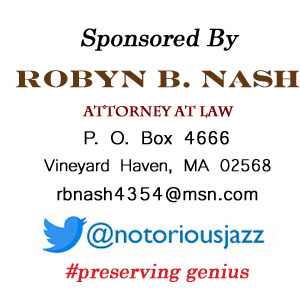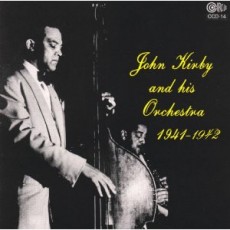
Daily Dose Of Jazz…
John Kirby was born in Winchester, Virginia on December 31, 1908 though some sources say he was born in Baltimore, Maryland orphaned, and adopted. He hit New York at 17, but after his trombone got stolen, he switched to tuba.
Kirby joined Fletcher Henderson’s orchestra as a tuba player in 1929. In the early 1930s, he performed some amazingly complicated tuba work on a number of Henderson’s recordings. He picked up on the double bass at the time when tuba was falling out a favor as the primary bass instrument of jazz bands.
About 1933 Kirby left Henderson to go with Chick Webb, went back with Henderson, then with Lucky Millinder and briefly led a quartet in 1935 but generally kept busy as bassist in others’ groups. Securing a gig at the Onyx Club and really got going as a bandleader in 1937. Soon the sextet was known as the Onyx Club Boys.
“The Biggest Little Band in the Land,” as it was called began recording in August 1937 and immediately had a hit with a swing version of “Loch Lomond” and though the group’s name would vary with time this would become one of the more significant “small groups” in the Big Band era and was also notable for making the first recording of the Shavers song “Undecided”. He recorded with Maxine Sullivan for Vocalion Records and accompanied Billie Holiday.
John tended toward a lighter, classically influenced style of jazz, often referred to as chamber jazz. He kept trying to lead a group in clubs and in the studio, occasionally managing to attract such talents as Dizzy Gillespie, Benny Carter, Ben Webster, Clyde Hart, Budd Johnson and Zutty Singleton and Sarah Vaughan.
As John Kirby’s career declined, he drank too much, was beset by diabetes and moved to Hollywood, California, where he died on June 14, 1952 just before a planned comeback.
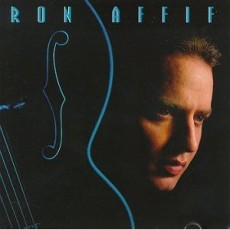
Daily Dose Of Jazz…
Ron Affif was born on December 30, 1965 in Pittsburgh, Pennsylvania of mixed Lebanese and Italian origin. His father, a jazz fan, initiated him in music and his uncle, renowned jazz guitarist Ron Anthony, with whom he would study from age 12. He also studied with Jerry Conderata and Joe Negri.
Moving to Los Angeles he took lessons from the jazz guitarist Joe Pass, then worked with everybody from Al Martino to Roger Williams and learned a ton of Gershwin tunes before moving to New York City in late 1989. By the late 1990s, he recorded five albums under the Fantasy record label, of which the best known is “52nd Street”. In 1998, he formed the Ron Affif Trio alongside fellow musicians bassist Essiet Okon Essiet and drummer Jeff “Tain” Watts.
Affif’s style is bop-based reminiscent of Wes Montgomery and George Benson. He has played with Dick Berk, Dave Pike, Pete Christlieb and Jack Sheldon. His singing quality is what distinguishes Ron from most of the other guitarists. He phrases with a sense of rhythm and pace allowing each note to blossom and recede with a breath-like purity and relaxation that belies his fiery chops. Hard bop guitarist Ron Affif continues to perform, compose, record and tour.
More Posts: guitar
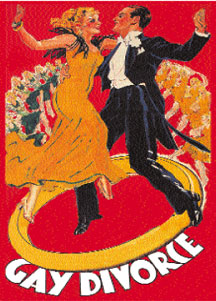
From Broadway To 52nd Street
The stage of the Ethel Barrymore Theatre opened its curtains on November 29, 1932 to the Gay Divorce. The musical starred once again Fred Astaire, this time in his last Broadway show, and teaming up with Claire Luce and Erik Rhodes. Although Gay Divorce ran for only 248 performances, Night and Day, composed by Cole Porter, emerged to become a jazz classic.
The Story: In this musical unfolds the story of a husband and wife who are having marital difficulties and in an effort to give her husband grounds for divorce, Mimi Pratt arranges to be caught with a paid co-respondent, by the name of Tonetti. But a young man named Guy falls for Mimi and manages to get himself confused with Tonetti; yet, amidst the confusion he pursues his courtship.
Broadway History: The theatre on Madison Square at the end of the 19th century was located at the intersection of Broadway and Fifth Avenue at W. 23rd Street. The Flatiron Building now occupies the site. By midway through the following decade, the street blazed with electric signs as each theatre announced its shows and stars in white lights. By the turn of the 20th century the street had an entirely different look with as many as sixteen theatres on Broadway itself and many others located on side streets or other avenues.
Broadway became much more than a mere twelve blocks. It started at 13th Street and wound its way a mile and a half up the avenue to 45th Street ending in the heart of Longacre Square. The first decade of the century also saw the construction of many theatres, most notably The New Amsterdam on 42nd Street in 1903 along with four others the same year that are still standing today. Longacre Square had the first moving electric signs and it was when the Times Building was erected in 1904 that Longacre Square ceased to exist. It was now known as Times Square.
Sponsored By
www.whatissuitetabu.com
More Posts: broadway
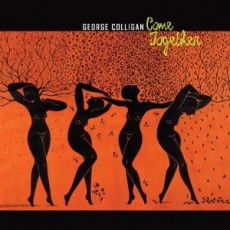
Daily Dose Of Jazz…
George Colligan was born on December 29, 1969 in New Jersey and raised in Columbia, Maryland, a suburb of Baltimore. He attended the Peabody Institute, majoring in classical trumpet and music education. In high school he learned to play the drums and later switched to piano.
Moving to New York City he quickly became an in-demand sideman working with Phil Woods, Billy Higgins, Gary Bartz, Nicholas Payton, Buster Williams, Don Byron, Vanessa Rubin, Christian McBride and Cassandra Wilson and many others.
George’s eclectic style incorporates everything from show tunes to funk, from free improvisation to modern classical music. He performs at festivals all over the world, including the North Sea Jazz Festival, the Edinburgh Jazz & Blues Festival, Vancouver International Jazz Festival, and the Cancun Jazz Festival.
As an educator, Colligan has taught at the Juilliard School of Music, the University of Manitoba, was the songwriter-in-residence at Aqua Books and has taught jazz history, piano, drums, trumpet, and led many different master classes. Continuing to perform and record, George Colligan is currently an Assistant Professor and Jazz Ensembles Coordinator at Portland State University in Oregon.
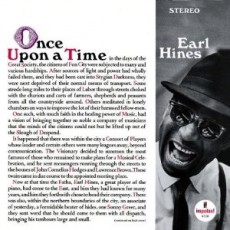
Daily Dose Of Jazz…
Earl “Fatha” Hines was born Earl Kenneth Hines on December 28, 1903 in Duquesne, Pennsylvania. The youngster took classical piano lessons and by eleven was playing organ in his local Baptist church. Having a “good ear and a good memory” he could re-play songs and numbers he heard in theaters and park concerts. At 17, with his father’s approval, Hines moved away from home to take a job playing piano in a Pittsburgh nightclub with baritone Lois Deppe & his Symphonian Serenaders. He would accompany Deppe on his concert trips to New York and record his first four sides for Gennett Records in 1923 that included Hines’ composition Congaine.
In 1925 Hines moved to Chicago, Illinois, then the world’s “jazz” capital, home to Jelly Roll Morton and King Oliver. He started in The Elite no. 2 Club but soon joined Carroll Dickerson’s band, touring with him on the Pantages Theatre Circuit to Los Angeles. He met Louis Armstrong in the poolroom at Chicago’s Musicians’ Union and becoming good friends played together Louis was astounded by Hines’s avant-garde “trumpet-style” piano playing. They played together in Dickerson’s band, Louis’ Hot Five and The Unholy Three.
Hines joined clarinetist Jimmy Noone, recorded his first piano solos for QRS Records in 1928, then for Okeh in Chicago. In Chicago he lead his own big band at the Capone controlled Grand Terrace Café, working continuously through the Great Depression. He influenced or taught Nat “King” Cole, Jay McShann and Art Tatum. Fatha brought along in his band Dizzy Gillespie, Budd Johnson, Ray Nance, Trummy Young, Harry “Pee Wee” Jackson, Charlie Parker, Scoops Carry, Teddy Wilson, Omer Simeon and Nat “King” Cole, along with vocalists Sarah Vaughan and Billy Eckstine among others.
He laid the seeds for bebop bringing modern players like Gene Ammons, Benny Carter Wardell Gray, Bennie Green and shadow Wilson to name a few. Earl would hire and all-women group during WWII, fronted Duke Ellington’s band when he was ill, and had a serious head injury from a car crash that affected his eyesight for the rest of his life.
Earl “Fatha” Hines was one of the most influential figures in the development of modern jazz piano and according to one major source, is “one of a small number of pianists whose playing shaped the history of jazz”. To name a few would be an injustice to those unmentioned as his list of recordings with jazz notables runs endlessly.
Over the course of his career Earl joined up again with Armstrong in what became the hugely successful “Louis Armstrong and his All-Stars small-band”, he won Downbeat Magazine’s Hall of Fame “International Critics Poll” and elected him the world’s “No. 1 Jazz Pianist”, made a hour long documentary at Blues Alley in Washington, DC, played solo at the White House and for The Pope, and played and sang his last show in San Francisco a few days before he died in Oakland, California on August 22.1983. On his tombstone is the inscription: “Piano Man”.
More Posts: piano






